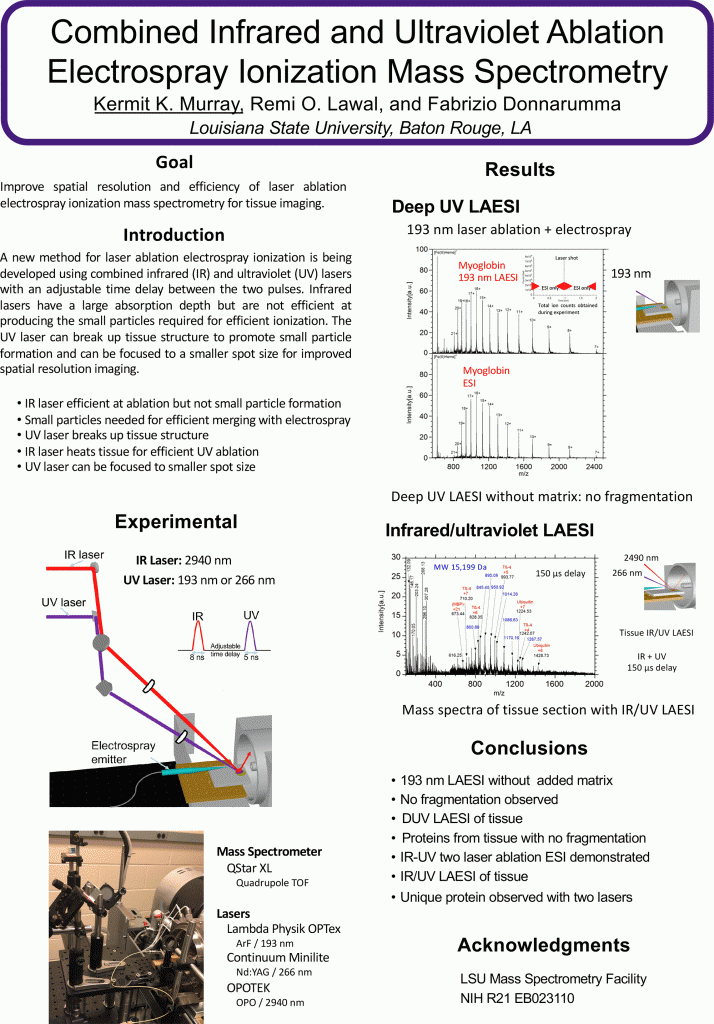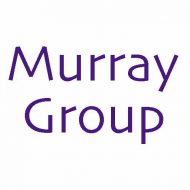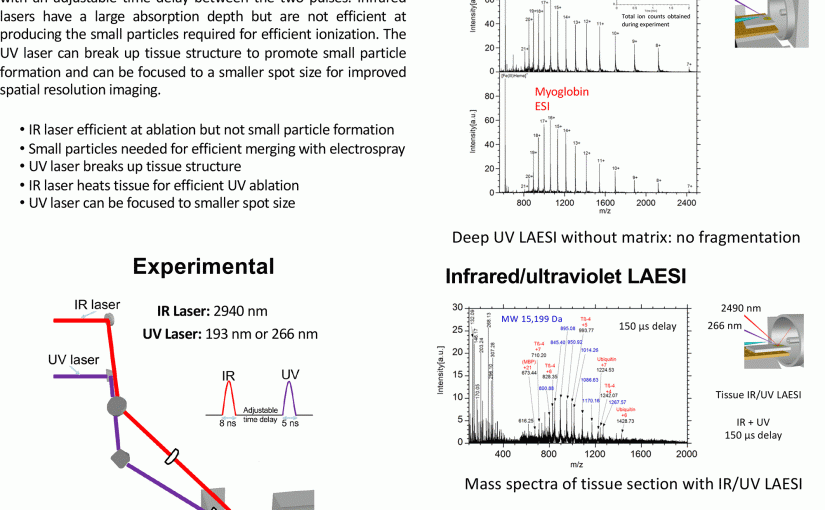International Mass Spectrometry Conference, Florence, Italy, August 27, 2018

Kermit K. Murray, Remi O. Lawal, and Fabrizio Donnarumma
Louisiana State University, Baton Rouge, LA
Introduction
We are using combined mid-infrared and deep-ultraviolet two-laser ablation coupled with electrospray ionization for ambient mass spectrometry of biomolecules in tissue. The goal is to increase nanoparticle production and improve sensitivity by using the UV laser to disrupt the tissue structure followed by IR ablation and ionization.
Methods
In this work, we are using a 193 nm ArF excimer laser to disrupt the tissue prior to irradiating with a 3000 nm IR optical parametric oscillator. Both lasers are focused onto the same target spot and separated in time by an adjustable delay. A nanospray needle is directed at the inlet on-axis of a modified quadrupole time-of-flight mass spectrometer.
Results
The two-laser ablation system has been constructed and initial studies carried out for optimization of the system with peptide and protein standards. The lasers are mounted on an aluminum breadboard adjacent to the ion source and are focused onto the target with a single calcium fluoride lens for each beam. The dual-laser configuration can be operated either with the UV firing first to disrupt the covalent bonding in the tissue or with the IR firing first to heat the tissue. Initial studies with 193 nm laser ablation electrospray ionization demonstrate that the deep-UV is a much softer ionization method than might be anticipated and can produce ions from peptides and proteins without a matrix and with little fragmentation. Based on this interesting new result, initial experiments are aimed at improving the efficiency of the deep-UV ablation using IR laser pre-heating.
Conclusions
We have demonstrated that deep-UV and IR ablation coupled with electrospray ionization is a promising soft ionization method for large molecules with applications to tissue imaging. Continuing experiments are aimed at optimizing the UV and IR laser pulse energies and time delay to improve the sensitivity as well as improving the UV laser focus to improve spatial resolution.
Novel Aspect: Combined mid-infrared and deep-ultraviolet laser ablation on the same spot for laser ablation electrospray ionization imaging.

